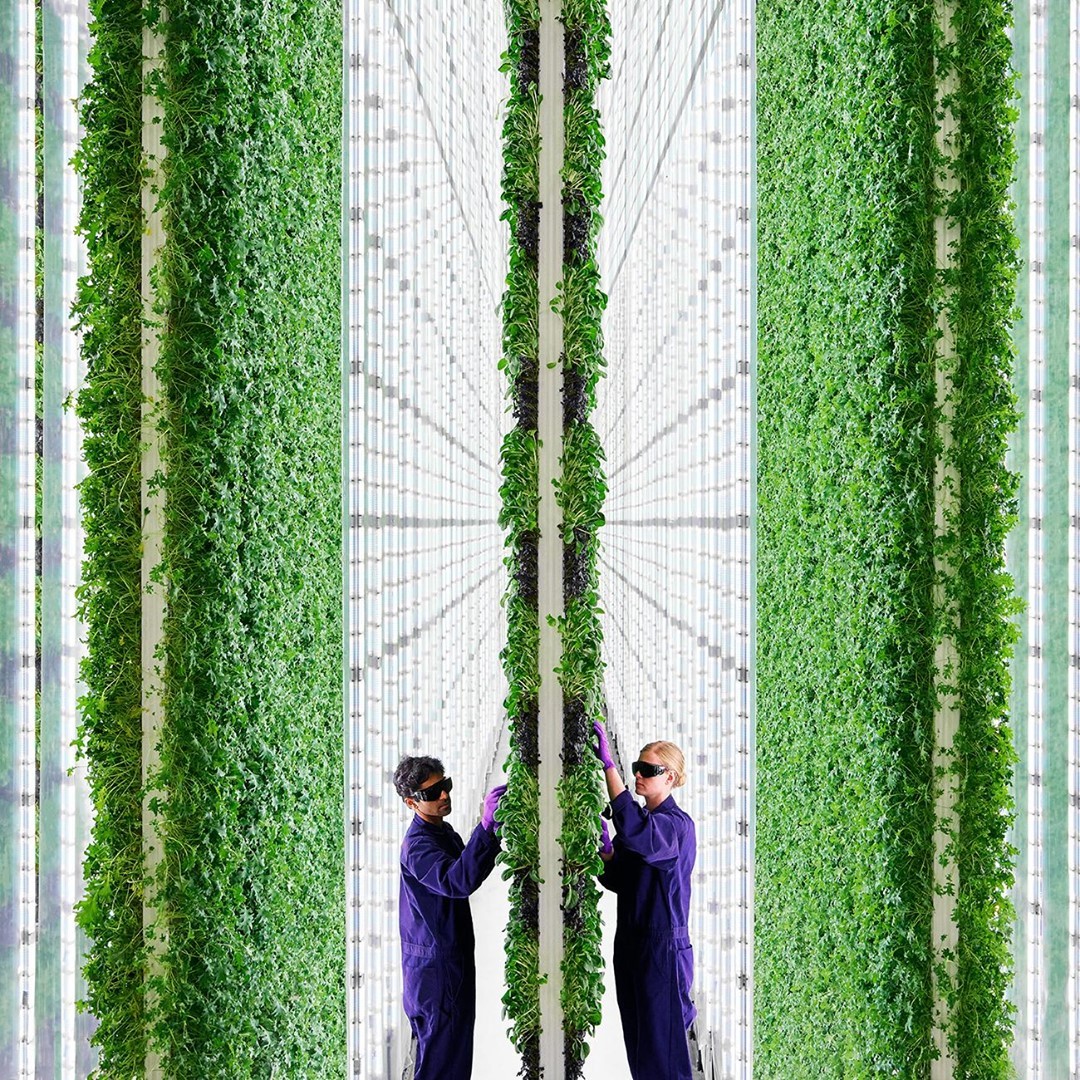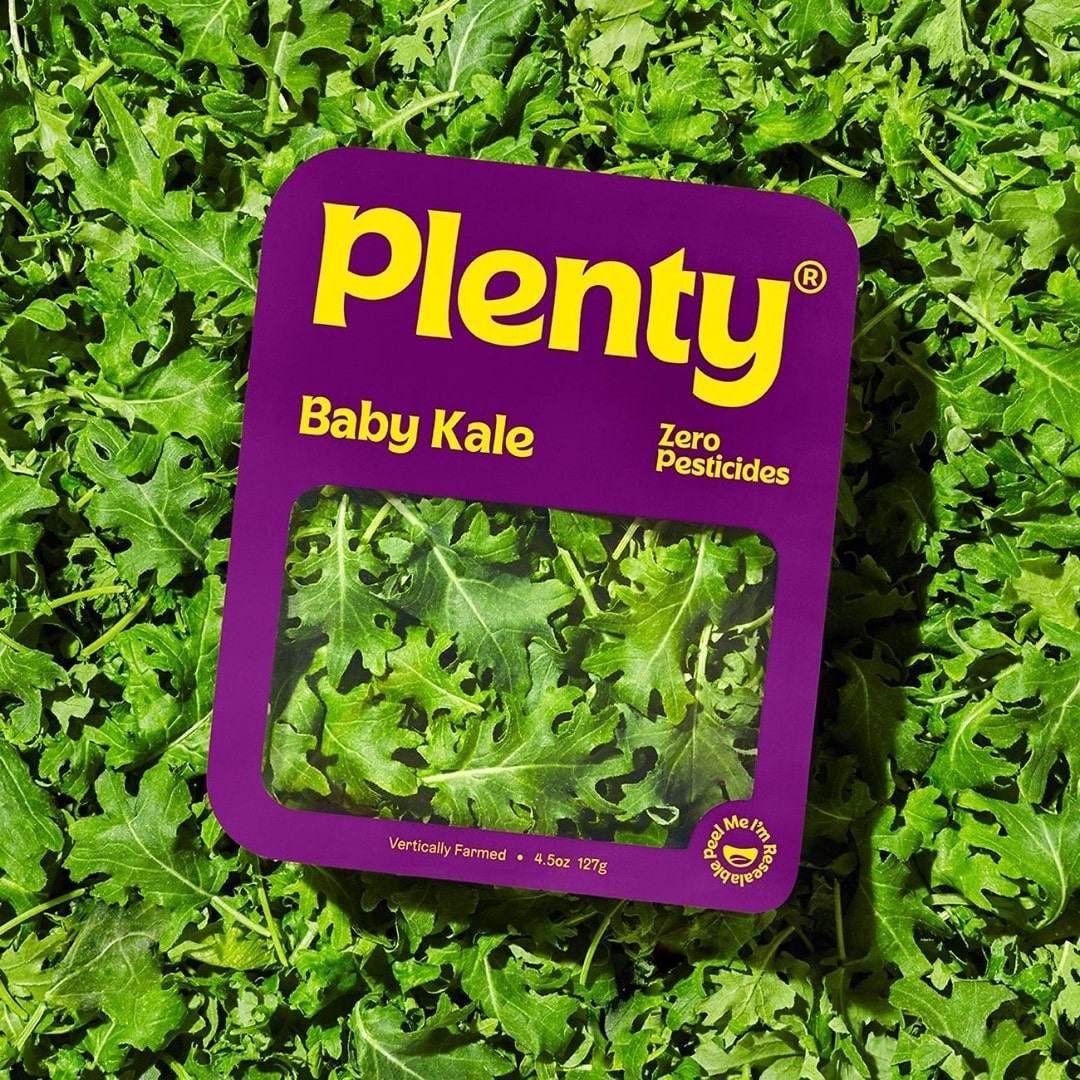Compton, CA, is now formally residence to the Lots Compton Farm—the primary and solely commercial-scale vertical farm on the West Coast.
The brand new farm, owned and operated by farming firm Lots, is aiming to produce the southern Los Angeles metropolis with 4.5 million kilos of leafy greens, like child arugula, child kale, crispy lettuce, and curly child spinach per 12 months. All are recent, pesticide-free, and nutritious, however not like most greens, they’re grown inside, on two-story-high, 3D-vertical towers. Based on Lots, the brand new modern indoor structure can yield as much as 350 occasions the yield per acre of a standard farm.
So, does this improvement—which can see Lots work with Complete Meals, Walmart, and Singapore Airways, amongst others—sign a leap ahead for sustainable agriculture? Perhaps. And are all of us about to start out discovering extra vertically grown greens on the cabinets? Fairly probably, nevertheless it doubtless relies on the place you reside—let’s dive in.
What’s vertical farming?
In a nutshell, vertical farming takes the normal mannequin of flat, open-field farming and tilts it 90 levels upwards. Doing so signifies that, as a substitute of rows and rows spanning out into acres of land, vegetation might be grown in layers on vertical buildings in environment friendly, managed indoor environments. Which means many vertical farming firms like Lots could make higher use of the area in extremely populated main cities.
Whereas it’s the primary to open a farm in California, Lots isn’t alone within the vertical farming trade. Final 12 months, indoor rising firm Crop One Holdings teamed up with Emirates to open a 330,000-square-foot farm in Dubai. And again within the US, on the East Coast, Bowery Farming’s vertically grown greens are on the cabinets in retailers like Complete Meals and Brooklyn Fare.
Proper now, the vertical farming market is value almost $590 million, nevertheless it’s anticipated to increase at a compound annual development charge of greater than 20 % by 2030, studies Grand View Analysis.
 Lots/Instagram
Lots/Instagram
Vertical farming gives a brand new strategy to feed busy cities with recent, native meals
The indoor, vertical farming strategy is good for cities like Compton, which has been dubbed a meals desert. Which means entry to recent, domestically sourced meals like fruit and veggies is restricted, whereas processed meals, fast-food chains, and liquor shops are in abundance. And since it’s a busy built-up metropolis, there isn’t quite a lot of area for typical, open-field farms.
“The Lots Compton Farm is bringing field-scale farming again to Compton and introducing a brand new era of our group to careers in agriculture—greater than 30 % of the farm’s hires got here from Compton,” town’s mayor Emma Sharif mentioned in an announcement. “Lots’s farm is a mannequin for the way we are able to enhance entry to recent, domestically grown meals for city populations whereas supporting cities’ financial improvement.”
Indoor farming additionally makes excellent sense in Dubai, which has an increasing inhabitants, a scarcity of arable land, and, like a lot of the world, a quickly warming local weather. However elsewhere, probably the most environment friendly means of manufacturing meals would possibly truly contain extra conventional strategies.
 Lots/Instagram
Lots/Instagram
Can vertical farming feed the world?
Firms like Lots, Crop One, and Bowery Farming are engaged on a brand new sustainable, modern strategy to offering the world’s inhabitants with recent, wholesome meals. “This is step one in placing indoor-grown produce on a path to turning into a significant a part of the worldwide meals provide,” Lots’s CEO Arama Kukutai mentioned relating to the brand new facility.
The important thing phrase on this assertion is “a part of.” Vertical farming isn’t making an attempt to switch typical agriculture, however moderately fill within the gaps the place persons are struggling to entry recent, domestically sourced wholesome meals as a result of area and assets are restricted.
In lots of areas of the world, analysis suggests a extra conventional strategy truly makes extra sense. Final 12 months, a report by the College of Oxford discovered that in Santiago, Chile, for instance, the place circumstances are suited to develop greens, open-field is definitely a extra environment friendly system for meals manufacturing than vertical farming.
It is because for vertical farming to actually make sense by way of sustainability, it should take up fewer assets than different strategies. Vertical farming makes use of far much less water than common strategies, however creating the circumstances to develop nutritious crops inside undeniably takes an immense quantity of electrical energy. So to be sustainable by way of land, vertical farms must be supported by renewable, low-carbon vitality sources.
“To correctly think about the sustainability and footprint of every farming methodology, the area wanted to seize renewable vitality have to be added to the general land footprint,” mentioned examine creator Until Weidner.
So, the underside line is, vertical farming is unlikely to feed the world. However in lots of locations the place the circumstances are unfavorable for typical farming strategies, this extra, modern means of rising meals is undoubtedly set to make a major distinction for tens of millions of individuals.
For extra on farming, learn:


